Digging Diaries 2025 – second week
We’re already into the second week of the mission, and the rhythm of excavation has become part of our daily life.
The minibus drives off quickly, raising a cloud of dust and sand, while we remain south of Djoser’s pyramid, just a few steps away from the area we’re exploring. The morning air is still cool: bundled up in windbreakers and scarves, we shoulder our backpacks and head toward the site. It’s exactly 7:00 a.m.
Our Egyptian colleagues are already there; the rais Mohammed spots us and greets us with a smile. Between handshakes, we exchange good wishes for the day: sabāh el-kheir, answered by the melodic and poetic sabāh el-nur — “a morning of light.” And indeed, the light is coming. Around us, the sun begins to rise above the horizon, slowly warming the sand; the air fills with a subtle vibration — that of a place which, day after day, continues to tell its story.
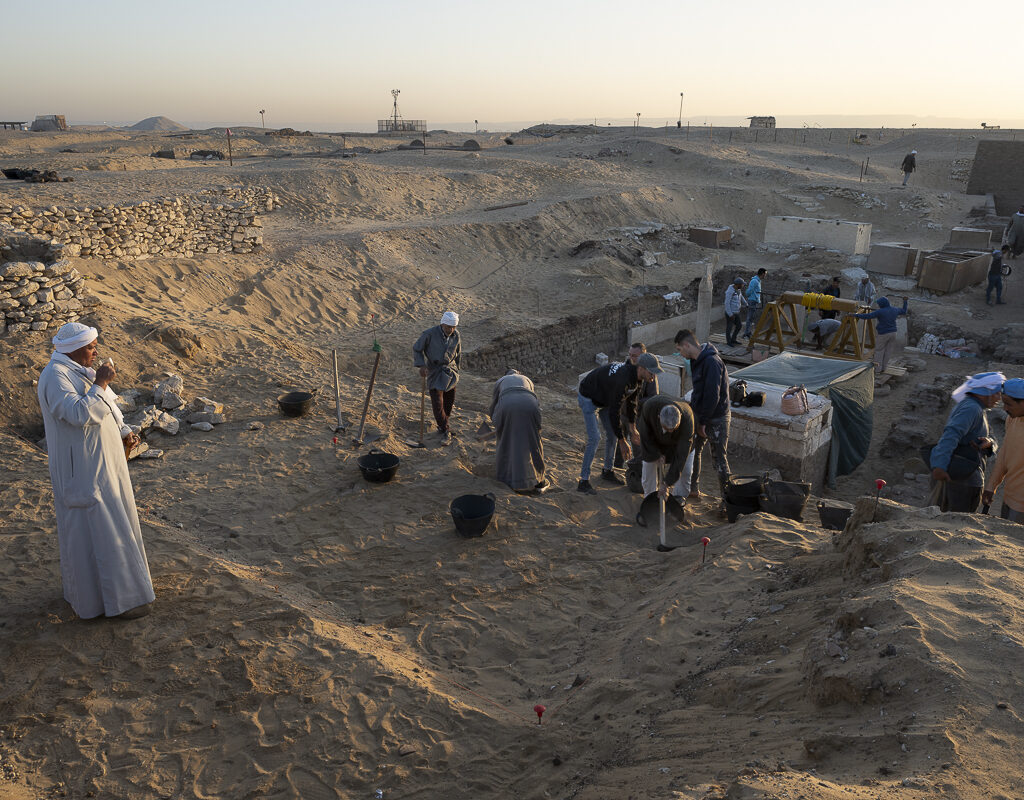
[Figure 1: The excavation team at work, with the rais Mohammed on the left. Photo: Nicola Dell’Aquila.]
Over the past week, we’ve continued working in the area of Panehsy’s tomb, focusing particularly on the western side to better understand its outer perimeter. At the same time, activities continue in the tomb shaft, which had already been partially excavated during the previous mission. We are now in the deepest section, which we’re carefully clearing so that it can later be documented through 3D modeling.
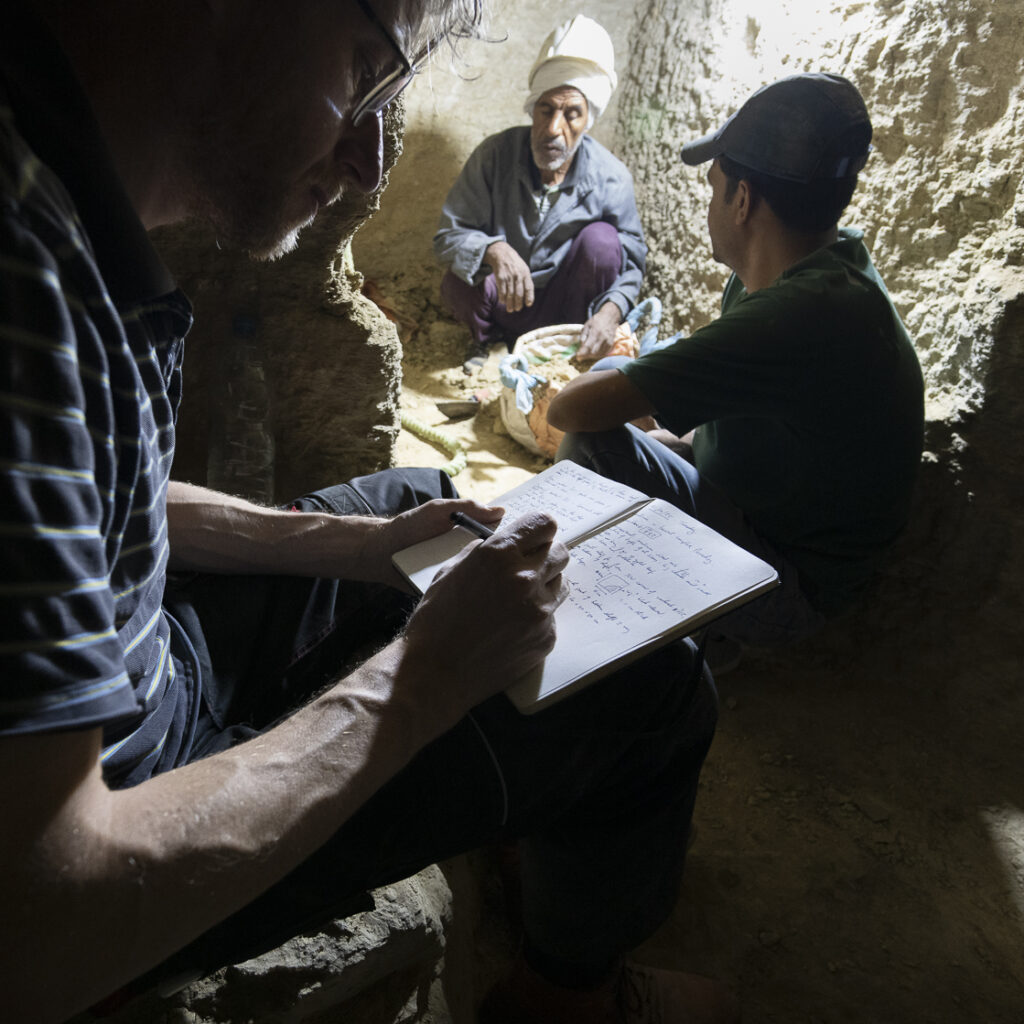
[Figure 2: Nico Staring (left) documenting the shaft with the help of Walid Khaled (right) and Mustafa Said Mohammed (in the background). Photo: Nicola Dell’Aquila.]
The excavation proceeds stratigraphically: in the upper layers we find traces of our own era or just slightly earlier ones. Believe it or not, we even uncovered old newspaper pages with the date still visible! Only by digging will we reach the historical period to which Panehsy’s tomb belongs (1539–1077 BCE). It’s a long and meticulous process: every piece of information must be recorded. Layer by layer, small pottery fragments begin to emerge from the sand — rims, handles, bases, walls. They are the first signs that the site is ready to reveal its stories.
When a fragment is collected, its journey is far from over — in fact, that’s when it truly begins. Each zambil — baskets made from old tires — leaving the excavation area, filled with pottery, carries the number of the stratigraphic unit where the fragments were found, the excavation year, coordinates, and a few notes from the field book. The baskets are transported to the courtyard of Horemheb’s tomb, where the washing of the fragments begins. Water removes the sand and reveals the surfaces, the marks left by the potter’s wheel or by the craftsman’s fingers. Drying takes place in the sun. Little by little, the mats fill up with clean sherds — it’s time for sorting: selection, division, observation.
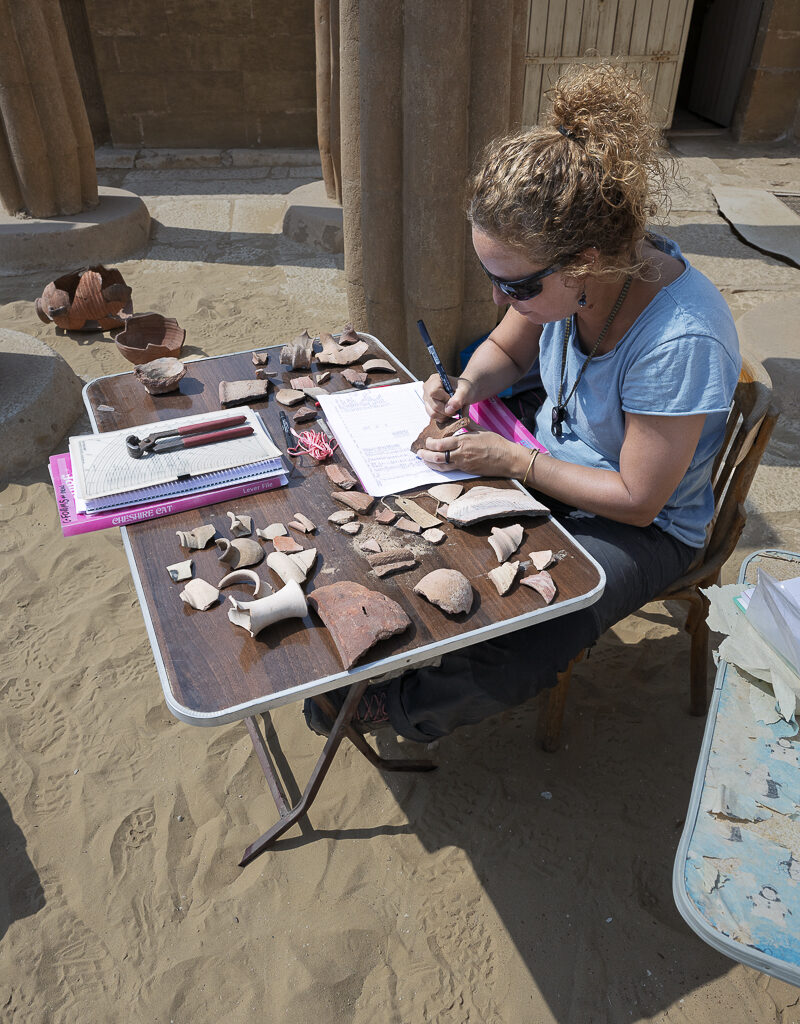
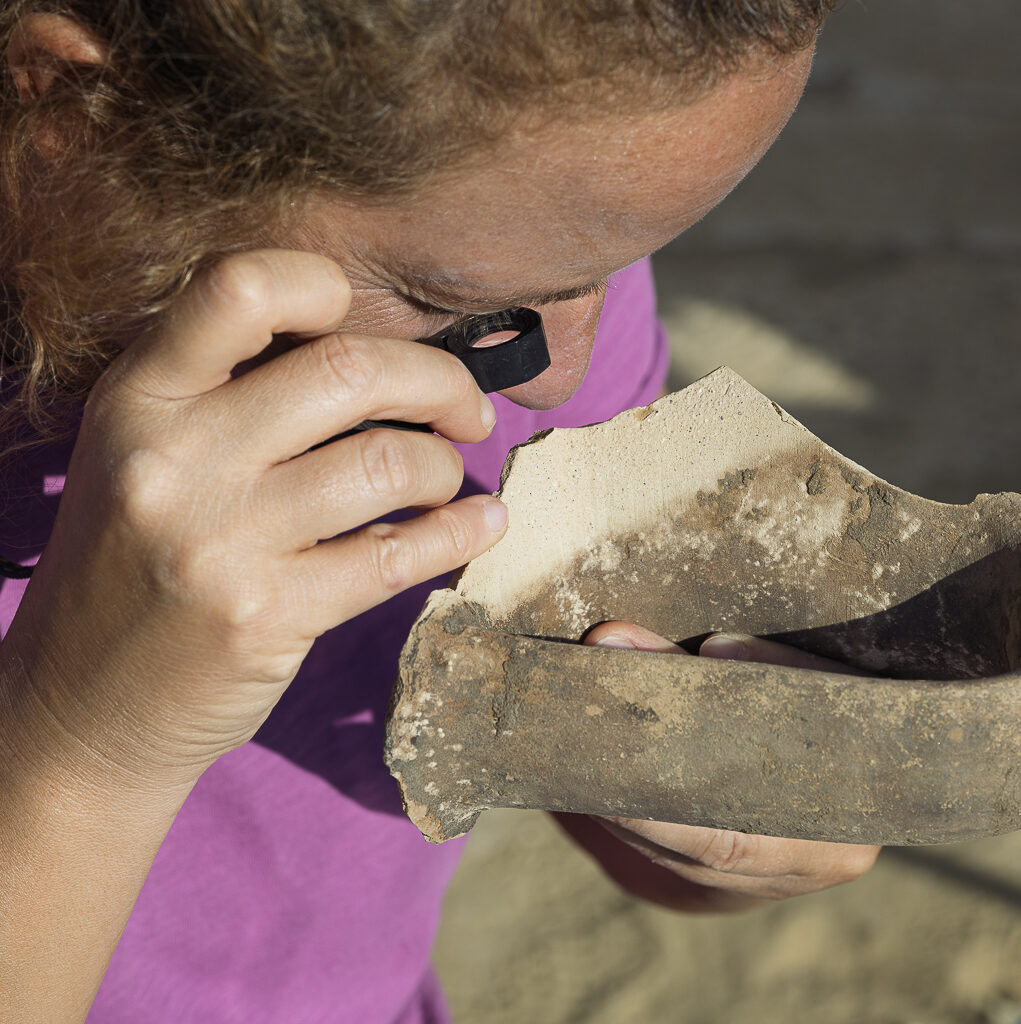
[Figures 3–4: Valentina Gasperini (left) recording ceramic finds; on the right, examining the fabric of an amphora. Photos: Nicola Dell’Aquila.]
With practiced gestures, we separate body sherds from diagnostic pieces (rims, handles, bases — the fragments that allow the full shape of a vessel to be reconstructed), identify the fabrics, look for joins, and jot down first impressions. Next comes cataloguing, especially for the most “talkative” fragments, which are also drawn. Ceramic drawing is a crucial step in archaeological work, as it allows us to represent the original shape of fragments and vessels accurately and legibly. Through drawing, every detail — wall thickness, rim curvature, decoration — is rendered to scale using a standardized graphic language, making it possible to compare finds across sites.
It’s the first step in turning a pile of sherds into scientific data.
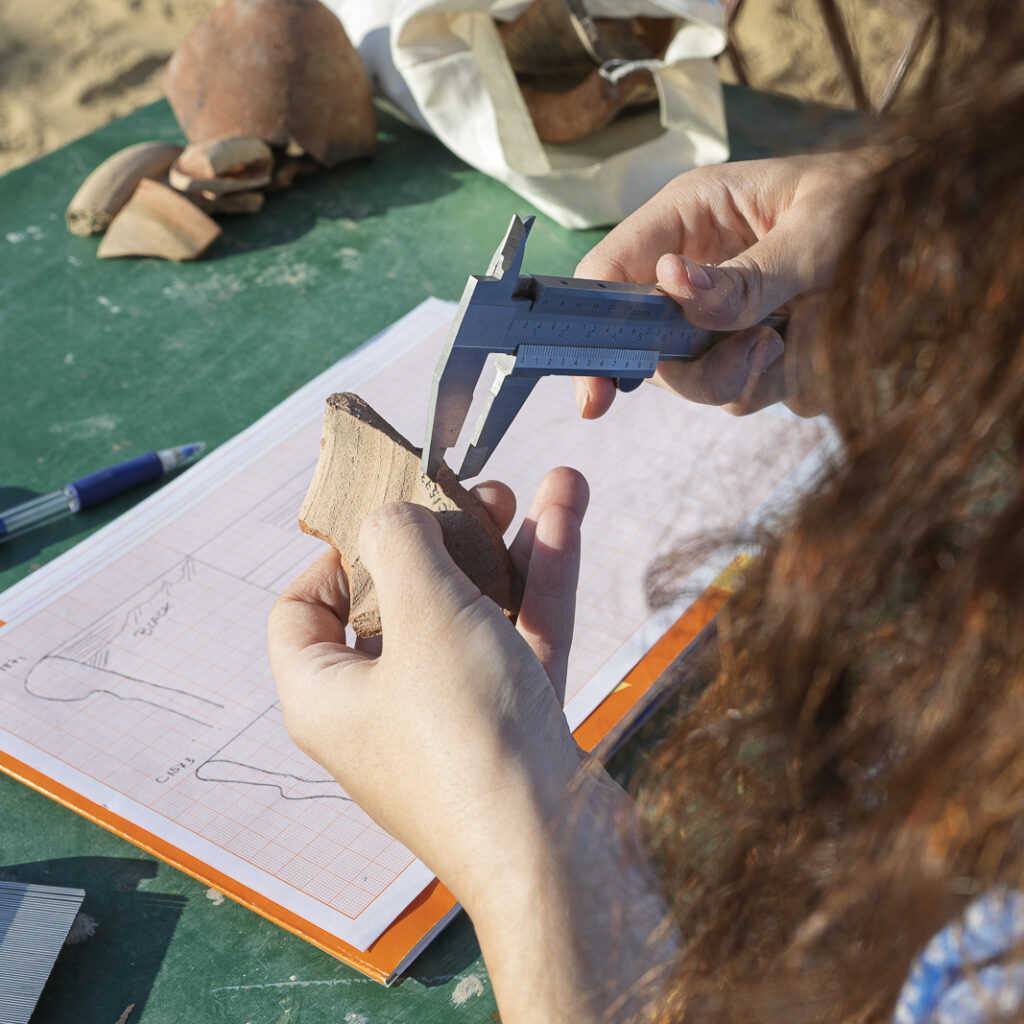
[Figure 5: Divina Centore drawing the profile of a fragment. In the photo, she uses a caliper to record wall thickness. Photo: Nicola Dell’Aquila.]
Nearby, the restorers reassemble joining fragments using a vinyl resin. It’s essential to ensure that they fit perfectly and stay in the correct position as they dry. No uneven surfaces should appear — only then can we restore the vessel’s integrity and its original appearance.
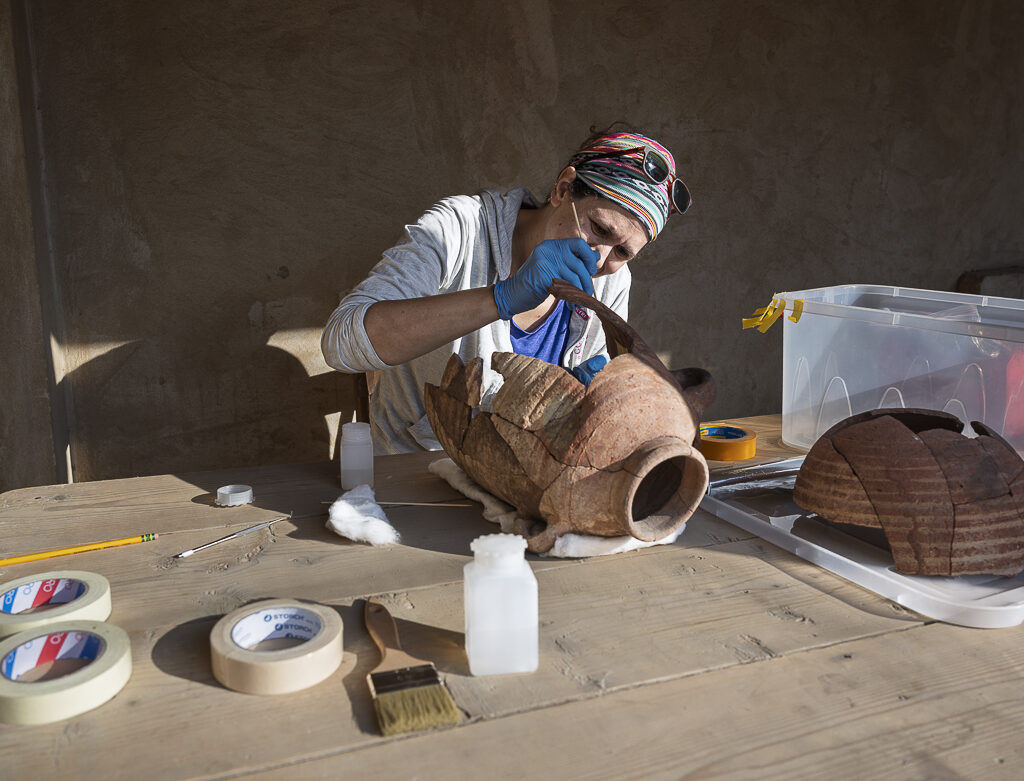
[Figure 6: Sara Aicardi working on the restoration of a vessel. Photo: Nicola Dell’Aquila.]
Pottery is the “guiding fossil” of archaeological excavation — a material that has accompanied humankind since the beginning, and which, precisely because of its ubiquity and variety, helps us identify chronologies, functions, and contexts. By analyzing fabrics, shapes, and decorations, we can understand not only when a space was in use, but also how it was lived in — from everyday activities to temple rituals. Try opening your own kitchen cupboards at home: do you have ceramic dishes too? What might they tell about you and your daily habits?
See you in the next field diary!
يوميات التنقيب الأثري لعام 2025 – الأسبوع الثاني
وصلنا للأسبوع الثاني من الحفريات، وأصبح روتين التنقيب جزءاً منا
تبتعد الحافلة الصغيرة بسرعة مثيرة سحابة من الغبار و الرمل، نبقى جنوب هرم زوسر، على بعد خطوات قليلة من المنطقة التي نستكشفها. هواء الصباح لا يزال منعشاً: نرتدي سترات واقية من الرياح ونضع حقائبنا على أكتافنا ونسير نحو موقع التنقيب. الساعة السابعة تماماً
سبقنا الى الموقع فريق العمل المصري، رآنا الريس محمد واستقبلنا بابتسامة عريضة. بين مصافحة وأخرى، نتمنى لبعضنا البعض صباح الخير باللغة العربية، فيردّ علينا بصوت عذب ”صباح النور“. والنور قادم بالفعل. بدأت الشمس تشرق في الأفق لتنير ما حولنا، وتدفئ الرمال ببطء ويمتلئ الهواء بذبذبات خفية - ذبذبات المكان الذي يعود يوماً بعد يوم ليحكي قصته الخاصة

.صورة رقم 1: فريق الحفريات أثناء العمل، مع ريّس محمد على اليسار. صورة: نيكولا ديلأكويلا
خلال الأسبوع الماضي، واصلنا العمل في منطقة مقبرة بانحسي، مع التركيز بشكل خاص على الجانب الغربي من أجل فهم محيطها الخارجي بشكل أفضل. وفي الوقت نفسه، استمر العمل في فتحة المقبرة التي تم حفرها جزئياً خلال حفريات البعثة السابقة. نحن الآن في الجزء الأعمق، نقوم بتنظيفه بعناية من أجل توثيقه لاحقاً باستخدام نموذج ثلاثي الأبعاد

صورة رقم 2: نيكو ستارنغ على اليسار يوثق البئر بمساعدة وليد خالد (على اليمين) ومصطفى سعيد محمد (منتصف الصورة) صورة: نيكولا ديلأكويلا
تتقدم أعمال التنقيب على عدة طبقات: في الطبقات السطحية نجد آثاراً تعود إلى عصرنا أو قبل ذلك بقليل. حتى أننا وجدنا صفحات جرائد قديمة مطبوع عليها التاريخ! فقط عندما ننزل أعمق وأعمق نصل إلى الحقبة التاريخية التي تنتمي إليها مقبرة بانحسي: المملكة الحديثة (1539-1077 قبل الميلاد). إنها عملية طويلة ومضنية، حيث يجب تسجيل كل معلومة ممكنة. طبقة بعد طبقة، تبدأ قطع صغيرة من الفخار بالظهور بين الرمال: شظايا من حواف الأواني، من المقابض، من الجدران ومن قاع الأواني. هذه هي العلامات الأولى التي تشير إلى أن الموقع جاهز ليروي لنا قصصه
لا تنتهي الرحلة عندما تُجمع شظايا الفخار - بل تبدأ من تلك اللحظة. فكل زمبيل - سلة مصنوعة من الإطارات القديمة - يغادر منطقة التنقيب، محمل بالفخار، يحمل معه رقم المنسوب الذي عُثرت به الشظايا، وسنة التنقيب، والإحداثيات وبعض الملاحظات المكتوبة في دفتر ملاحظات. تُنقل الزنابيل إلى فناء مقبرة حورمحب حيث تبدأ عملية غسل القطع. يزيل الماء الرمال ويكشف عن الأسطح والعلامات التي تركتها عجلة الخزّاف أو أصابعه. يتم تجفيفها في الشمس. وشيئاً فشيئاً، تمتلئ الحصيرة بالقطع النظيفة، عند ذلك يحين وقت الفرز: الاختيار والتقسيم والمراقبة


صورة رقم 3-4: فالنتينا غاسبيريني على اليسار أثناء تسجيلها للقطع الأثرية الخزفية، وعلى اليمين أثناء مراقبة تكوين إناء خزفي. صورة: نيكولا ديلأكويلا.
إجراءات العمل أصبحت تلقائية، يتم فصل شظايا الجدران عن باقي الشظايا (الحواف، المقابض، القواعد - فمن هذه القطع يمكن إعادة بناء الشكل الكامل للوعاء)، يتم التعرف على تكوين الخلطات، والبحث عن القطع التي تتطابق مع بعضها البعض وتدوين الانطباعات الأولى. يتبع ذلك تسجيل ورسم القطع التي تعطينا دلالة أوضح. يعد رسم الخزف مرحلة أساسية من مراحل العمل الأثري، لأنه يسمح باستعادة الشكل الأصلي للقطع والأواني بشكل دقيق. من خلال الرسم، يتم تحديد كل التفاصيل بمقياس عالمي موحد - مثل سماكة الجدران، طريقة انحناء الحافة أو الزخرفة - بحيث يمكن مقارنتها مع قطع أثرية أخرى
إنها الخطوة الأولى لتحويل كومة من القطع المكسورة إلى بيانات علمية

صورة رقم 5: ديفينا سينتوري ترسم شكل قطعة من الفخار. في الصورة، تستخدم مقياساً لتسجيل السماكة. صورة: نيكولا ديلأكويلا
بجانب ذلك العمل، تقوم المتخصصات بالترميم بتجميع الشظايا التي يلصقونها بعضها ببعض باستخدام راتنج صناعي. من الضروري التحقق من أنها تتطابق تماماً وتبقى في الموضع الصحيح أثناء مرحلة التجفيف. يجب ألا يكون هناك أي اختلاف في المستوى: بهذه الطريقة فقط يمكننا إعادة الوعاء إلى حالته وشكله الأصلي

صورة رقم 6: سارة أيكاردي منشغلة بترميم إناء. صورة: نيكولا ديلأكويلا
الفخار هو ”الدليل الأساسي" للحفريات الأثرية، وهو مادة رافقت الإنسان منذ الأزل، وبفضل انتشارها وتنوعها، نستطيع تحديد التسلسل الزمني ووظائف وأسباب صناعة الأواني. من خلال تحليل المواد المستخدمة في صناعتها وأشكالها وزخارفها، يمكننا أن نفهم منذ متى كانت المنطقة مأهولة، وأيضاً كيف كان يعيشون بها الأشخاص: من الأنشطة اليومية إلى الطقوس الدينية والمعابد
حاولوا الآن فتح خزائنكم في المنزل، هل لديكم أيضاً أطباق خزفية؟ ماذا يمكن أن تروي عنكم وعن عاداتكم؟
!الى اللقاء في اليوميات القادمة